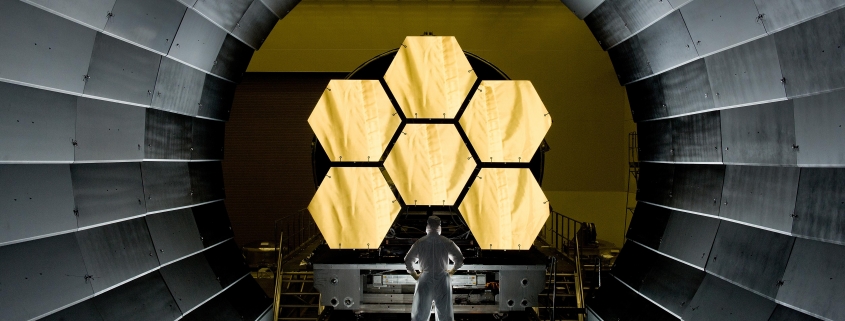Friday 4th March 2022 BRLSI in-person lecture also available online
The James Webb: The Next Generation of Hubble Telescope
Professor Martin Ward
Emeritus Temple Chevallier Professor of Astronomy at Durham University.
Image credit: (c) National Aeronautics and Space Administration
The Hubble Space Telescope has become an icon of Astronomy and it is now more than 30 years old. The new and much more powerful James Webb Space Telescope will soon extend our frontiers of observation. Professor Martin Ward has been involved in this exciting project for many years, and in this lecture he will give you a flavour of what is to come.
Lecturer background
Martin received his BSc. From Imperial College London. He then studied for his Masters and PhD degrees at Sussex University, combined with working at The Royal Greenwich Observatory, based at Herstmonceux Castle, in Sussex. He then accepted a Fellowship at Cambridge University. After this he moved to the USA, and worked at the University of Washington in Seattle, on preparations for the launch of Hubble Space Telescope, before returning to the UK to take up a lectureship at Oxford University. His first appointment as a professor was at Leicester University, where he was involved in the National Space Centre project based in Leicester. In 2004 he move to Durham to become the first holder of the title Temple Chevallier Professor of Astronomy. At Durham University he was Head of the Physics Department and the Science Director of the Institute of Advanced Study.
He has been an advisor to NASA and the European Space Agency in various roles, and has been associated with the James Webb Space Telescope project for more than 20 years. He has published nearly 400 papers in scientific journals. He has long standing interests in public outreach, and has appeared on the Sky at Night, with Patrick Moore, In Our Time, with Melvyn Bragg, and Start the Week, with Andrew Marr.
Image
NASA engineer Ernie Wright looks on as the first six flight ready James Webb Space Telescope’s primary mirror segments are prepped to begin final cryogenic testing at NASA’s Marshall Space Flight Center.
This represents the first six of 18 segments that will form NASA’s James Webb Space Telescope’s primary mirror for space observations. Engineers began final round-the-clock cryogenic testing to confirm that the mirrors will respond as expected to the extreme temperatures of space prior to integration into the telescope’s permanent housing structure.
The video recording of this lecture is now freely available on the Virtual BRLSI Youtube Channel: go to the following link to view it.
The James Webb: The Next Generation of Hubble Telescope



